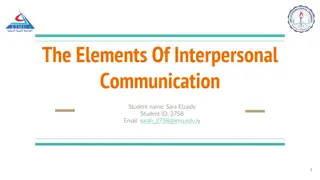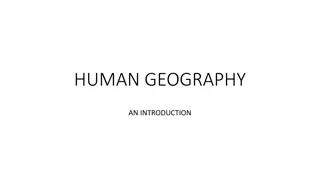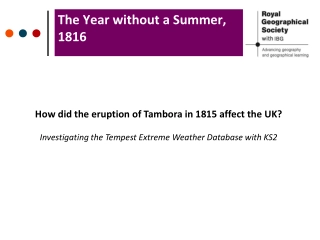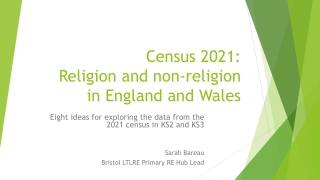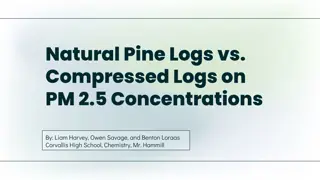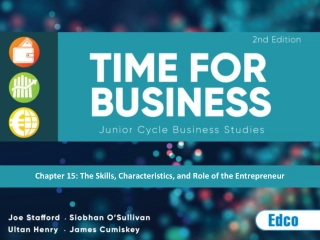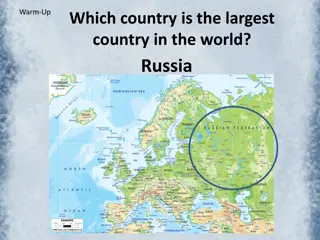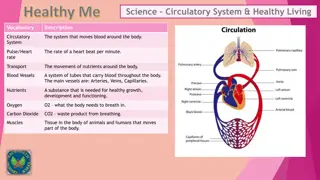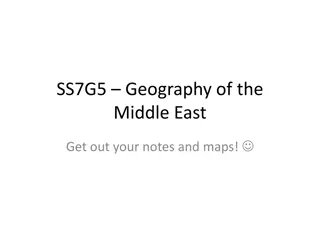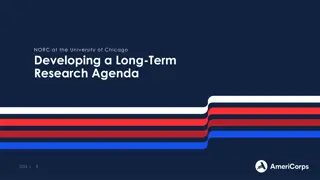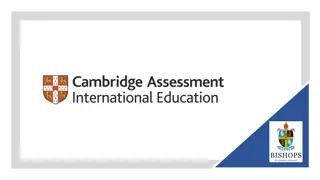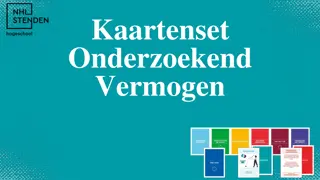Developing Essential Geography Skills at Ashurst Wood KS2
Planning at Ashurst Wood KS2 focuses on Geography-led topics, capturing key knowledge and skills. Students explore rivers' impact on human activity, geographic resources, countries and cities, water cycles, and more with fieldwork and analytical techniques. The curriculum nurtures a deep understanding of interconnected environments, encouraging curiosity and critical thinking in geographical exploration.
Download Presentation
Please find below an Image/Link to download the presentation.
The content on the website is provided AS IS for your information and personal use only. It may not be sold, licensed, or shared on other websites without obtaining consent from the author. Download presentation by click this link. If you encounter any issues during the download, it is possible that the publisher has removed the file from their server.
Presentation Transcript
Essential Characteristics An excellent knowledge of where places are and what they are like. An excellent understanding of the ways in which places are interdependent and interconnected and how much human and physical environments are interrelated. An extensive base of geographical knowledge and vocabulary. Fluency in complex, geographical enquiry and the ability to apply questioning skills and use effective analytical and presentational techniques. The ability to reach clear conclusions and develop a reasoned argument to explain findings. Significant levels of originality, imagination or creativity as shown in interpretations and representations of the subject matter. Highly developed and frequently utilised fieldwork and other geographical skills and techniques. A passion for and commitment to the subject, and a real sense of curiosity to find out about the world and the people who live there. The ability to express well-balanced opinions, rooted in very good knowledge and understanding about current and contemporary issues in society and the environment.
Commotion in the Ocean Amazing Africa Geography / History A river journey Geography Geography / Science Polar Regions Geography Fire & Ice Geography / Science Australia Dangerous Earth Geography / science Farm to Fork Geography / Science Geography / Science Commotion in the Ocean Geography / Science Rainforests Geography
GEOGRAPHY TEACHING AND LEARNING AT ASHURST WOOD KS 2 Our topic planning is designed so that some topics are Geography led and the key knowledge and skills are captured in the planning and knowledge organisers. Other topics may contain geographical knowledge in addition to the main driver. All children in KS1 will study the same topic and so expectations will be different for a YR Y1 and a Y2 child. For this reason and to ensure that there is no ceiling placed on a child s learning we have identified outcomes for all children Must (End of Y4) Should (end of Y6) Could a rich and deep understanding. What will children Know by the end of this topic ? A River Journey SHOULD Identify and describe how rivers affect the human activity within a location. Use a range of geographical resources to give detailed descriptions and opinions of the characteristic features of a location. Analyse and give views on the effectiveness of different geographical representations of a location (such as aerial images compared with maps and topological maps - as in London s Tube map). Name and locate some of the countries and cities of the world and their major rivers. Explain how these rivers have affected human and physical characteristics. Describe how countries and geographical regions are interconnected and interdependent. Describe and understand key aspects of: the water cycle. Explain and give examples of how rivers have influenced : settlements, land use, economic activity including trade links, and the distribution of natural resources including energy, food, minerals, and water supplies. understand geographical similarities and differences through the study of human and physical geography of a region of the United Kingdom, a region in a European country, MUST Understand and describe how the water cycles works. Names the main rivers in the UK Be able to identify similarities and differences between the Kingdoms of the UK Locate and name topical features on a map Use aerial photographs to describe features of a river. Use field work to observe and record physical features of a river location. Name and locate counties and cities of the United Kingdom, geographical regions and their identifying human and physical characteristics, including hills, mountains, cities, rivers, key topographical features and land-use patterns; and understand how some of these aspects have changed over time. (Thames barrier) Identify and name key physical features rivers, coasts, and describe how they influence human use. Use the eight points of a compass, four-figure grid references, symbols and key to communicate knowledge of the United Kingdom and the wider world. SKILLS Collect and analyse statistics and other information in order to draw clear conclusions about rivers. Use different types of fieldwork sampling (random and systematic) to observe, measure and record the human and physical features in the local area. Record the results in a range of ways. Create maps of locations identifying patterns (such as: land use, climate zones, population densities, height of land). Use the eight points of a compass, four-figure grid references, symbols and a key (that uses standard Ordnance Survey symbols) to communicate knowledge of the United Kingdom and the world. Enrichment Forest Schools Visit to Cuckmere Haven SKILLS Give and explain views about a location Ask geographical questions about rivers and the places they are found. COULD Describe how physical features are formed; rivers, lakes, waterfalls Represent a key geographical feature such as a riverbed in a 3D representation. Explain how climate change is resulting in rising sea levels and the affect this will have around the world.
Year / Class 2023- 2024 KS2 Topic Title: A river journey Pre learning Links. In KS1 prior knowledge will depend on which year group the child is in. Stunning Start: Cuckmere haven trip Commotion in the ocean location of seas and oceans Australia geographical landmarks The Big Question: Are all rivers the same? Fantastic Finish: Creative Arts and Forest School Links Dance Which kingdom has the most rivers? Small Question Science the water cycle Art Landscape water colours What are the key physical similarities and differences between the regions of the UK FS River habitats Vocabulary population precipitation condensation industry continent sub-continent development irrigation ground water tourist pollution Greenwich/Pri me Meridian Time zone scale [maps] grid reference terrain features contour lines natural products industrial land use congestion mountain weathering erosion [within weathering] port harbour factory office industry compass North West Environment grid reference satellite settlement patterns inland urban/ rural valley contour height deposition transportation confluence mouth source sustainable weathering/erosion natural disaster ox-bow lake spring [water] natural resources man-made materials Trade Leisure climate/ weather climate zones tributary river delta ox-bow lake grid reference water cycle arid evaporation settlement Excursion natural disaster Ordnance Survey distance scale Small Question Where are the UK rivers? Locate UK rivers and seas. settlement community landscape relief map political map cliff ocean fieldwork sketch North East South West valley vegetation soil transport [carry] diagram South East weather flood plain meander surface sea level Literacy links Small Question What is erosion? Pompei Small Question What are rivers used for? Topic books Book Lists for Rocks & Soils, Volcanoes, Mountains... (booksfortopics.com) Small Question Can you tame a river? Small Question Small Question Where do rivers start and finish? Are all floods bad? How can the sea heat our homes? (renewable energy) Small Question Why are there 50 cities on the UK rivers? Useful Links River facts - all about rivers. What is the longest river? (3dgeography.co.uk) https://www.bbc.co.uk/teach/class-clips-video/geography-ks1--ks2-the-water-cycle/zbcmxyc https://www.bbc.co.uk/news/magazine-26133660 Thames barrier
VOCABULARY Water Cycle. The continuous recycling process of water Tributary Where one river meets another and merge together. Stream A small body of flowing water. Source The beginning of a stream of water. A winding curve or bend in a river. Meander A large amount of fresh water flowing continuously in a long line across land. River A large area of water surrounded by land Lake The process that wears away the riverbed and banks. Erosion The process where material being transported by a river is put down. Deposition the route or direction followed by a river source the original point from which a river flows Course rain, snow, sleet, or hail that falls to or condenses on the ground Precipitation the gradual destruction of something Erosion The action of transporting someone or something Transportation the process where material being transported by a river is deposited Deposition matter that settles to the bottom of a liquid Sediments the alternate rising and falling of the sea Tide a river or stream flowing into a larger river or lake Tributary a length of water wider than a strait, joining two larger areas of water, especially two seas Channel moving unsteadily or violently Turbulent turn from liquid into vapour Evaporate A River Journey the process by which water on the ground surface enters the soil Infiltrate to become thoroughly soaked with water or other liquid so that no more can be absorbed Saturate











